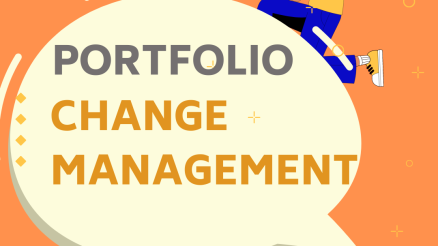Implementing change is harder than conceiving idea about change. Business leaders and managers who are leading change need to grasp theoretical and practical side of change. There are many scholars and practitioners who did research on the subject of change and presented their great work in the form of theories and models of change management. These models always help business leaders and managers who are working on change in one capacity or other.
Let’s look at the 08 most popular change management models:
1. Burke Litwin Model of Change
This model model identifies three levels of changes – three levels of changes- transformational, transactional changes and changes in performance in an organization which are derived by 12 factors or drivers of change. Organizational change is a display of these complex yet interconnected factors of change.
These factors are:
- external environment,
- mission and strategy,
- leadership,
- organizational culture,
- structure,
- system,
- management practices,
- working climate,
- task and skills,
- individual values and needs,
- motivation level
- Individual and organizational performance.
Here you can can also read Burke Litwin Model of Change Model in detail.
2. Bridges Transition Model
William Bridges developed a model which explains human emotional transition from ending phase to neutral zone to new beginning. This is also called as three stages model of change management.
- Ending Phase is about saying goodbye to old situation or ways of doing thing. It is not easy as it comes with lot of negative emotions.
- Neutral Zone is about learning to control negative emotions and making assessment about what will be the future.
- New Beginning is about accepting change and learning new skills in order to fit into new realities.
Change leaders and management need to understand the emotional perspective of employees who are going through change and help them to have successful transition from one stage to another.
Here you can also read Bridges Transition Model in detail.
3. Leavitt’s Diamond Model
Professor Harlod J. Leavitt developed this model which helps to understand interplay of four key elements which are structure, task, people and technology. This model is also known as Leavitt’s Diamond model and its key principle is that if one variable of organizational change is change it does affect other variables.
If structure gets changed then it will affect people, tasks and technology and if there are changes in employees then it will have implications for all other elements which are structure, tasks and technology.
The same is true for other two that if tasks get changed then all the rest of three elements will be changed and if technology is replaced then task, people and structure undergo big adjustments.
Here you can also read Leavitt’s Diamond Model in detail.
4. Kubler Ross Change Curve Model
Kubler Ross studied terminally ill patients and developed a 5 stages of grief and loss to explain emotional transitions an individual face experiencing catastrophic loss.
- The first stage is shock or denial when no body accepts new realities;
- The second stage of anger comes when employees reacts on what is happening;
- The third stage is called bargaining when they think they need some time to delay change;
- The fourth stage is depression which he surrenders and becomes extremely sad with lowest energy and productivity;
- The last stage is of acceptance when employees embrace change and find ways and solution to adjust in the new situation.
This simple but important model helps management to understand the emotional reaction of their employees while taking journey towards change and also prepare strategy how organization should handle this situation and what should be responses to each of transitional stage.
Here you can also read Kubler Ross Change Curve Model in detail.
5. ADKAR Model of Change Management
ADKAR is the most popular model of change management. ADKAR stands for Awareness, Desire, Knowledge, Ability and Reinforcement.The focus of this model is on individual change which is the basis of organizational change.
The first action to create understanding about change; the second action is to create willingness among employees to execute change; the next action is to impart knowledge about the change; the fourth action is to build capacity of employees and the final action is to sustain change.
Here you can also read ADKAR Model of Change Management in detail.
6. Kotter’s 8 Steps Model of Change Management
Kotter’s 8 steps model of change management explain acceptability of change through the following 08 steps:
- First step is to create urgency for change.
- Second step is to bring together like-minded employees to form coalition for change
- Third step is to create vision of change
- Fourth step is to communicate vision of change
- Fifth step is to remove obstacles
- Sixth step is to create short wins
- Seventh step is to build on small changes
- Eight step is to make change a part of organizational culture.
Here you can also read Kotter’s 08 Steps Model of Change Management
7. Lewin’s Model of Change Management
Lewin outlines three stage model of change model to explain the stages of change and how it is implemented and managed in organizations.
- First stage is unfreezing which basically revolves around getting people ready to start the journey of change.
- Second stage is change which talks about transition and what does it entail to experience the process of transition.
- Third and the last stage is freezing which is all about the stability and how change is institutionalized in the culture of an organization.
Here you can also read Lewin’s Model of Change Management
8. Iceberg Model of Change Management
Wilfried Kruger uses analogy of iceberg to explain process and dynamics of change management. This model mainly focuses on barriers of change and how these barriers can be managed to ensure change to take place without causing any problem.
Ice Berg Model of Change Management explains that more often than not managers narrowly define only three factors of change and these are: cost, quality and time. The author says that these are issue management. And these are the only tip of iceberg. These are only 10% of change happening in organization and 90% of change is below the iceberg.
Here you can also read Iceberg Model of Change Management



